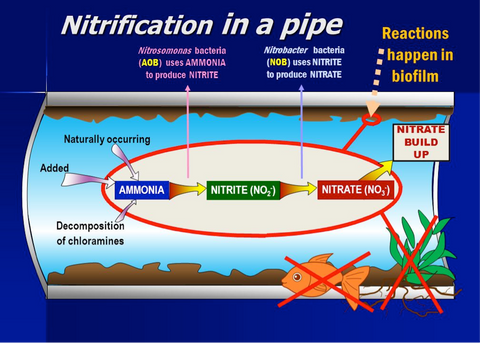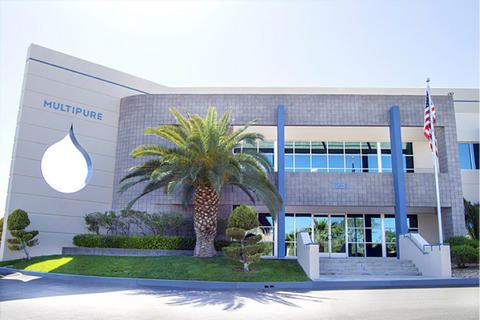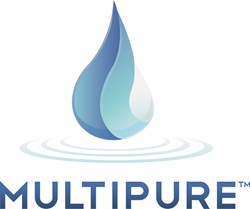You have no items in your shopping cart.
Chlorine and chloramine are very similar words. If you don't have a PhD in chemistry, you may very well think they're the same thing, and truth be told, they're pretty similar in many regards. Birds of a feather, if you like.
But, of course, you'd be wrong. Let me explain. To begin with, you should know that chloramine use in on the rise in the United States. And if you know what chloramines are, and, most importantly, what effects they have on people's health, you'd be scared.
The Necessity of Sanitary Tap Water
Generally speaking, people are not really aware of the fact that tap water is chemically treated. Don't get me wrong, treating tap water with chemical substances to get rid of biohazards is not something necessarily wrong nor unhealthy. Most municipalities in the United States use chlorine to treat the water. Chlorine is a strong disinfectant, hence it's been used worldwide for more than one hundred years to kill certain microbes and bacteria in public water supplies, which may pose a threat to human health. Obviously, chlorine is extremely toxic, even poisonous (have you ever heard about chlorine gas?), so you shouldn't try to wash yourself with chlorine, nor drink it. You'd die for sure.

Now, moving along with our story, chlorine does an awesome job with regard to keeping our tap water safe from nasty bugs, and at the same time, it's a very easy-to-remove "contaminant." Multipure water filtration systems are certified to completely remove chlorine (certified to remove over 99%) from your tap water, hence chlorinated tap water is perfectly kosher for you and your family, provided you're filtering it prior to ingesting it.
The Good and the Bad
The truth is, chlorine has some nasty side effects to human health, especially when it reacts with organic substances in the water, with the end result being carcinogenic substances. But the good news is that Multipure filters do a great job at removing those as well. So, if you use a Multipure water filter, and you drink chlorinated water, you're pretty safe: chlorine will do an amazing job keeping everything safe up to your home, then your Multipure filter will completely remove chlorine and its byproducts from your drinking water. In this scenario, chlorine and tap water are best friends.
However, in many USA municipalities, things are not that simple anymore.
The New and Growing (and questionable) Approach
There are a number of municipalities in the US that do not think highly of chlorine, hence they've already switched to chloramine.
Why is that, you asked? It's always all about the money.
But first, let's understand what chloramines are. It's pretty straight forward: chloramines are a combination of chlorine and ammonia, reacted together and used as a disinfectant.

There are 3 chloramine compounds: monochloramine, dichloramine and trichloramine, hence the term chloramines. In laymen's terms, dichloramine and trichloramine are created when too much chlorine is mixed with ammonia. Basically, the municipalities are trying to get monochloramine only, but in any system that is chloraminated you'll find all three compounds.
Now, what is ammonia, since it's an intrinsic part of chloramine? The simple answer is that ammonia is yet another very poisonous chemical substance, just like chlorine, which is also used for its disinfectant properties. By the way, ammonia is classified in the US as an extremely hazardous substance. Anyone who deals with ammonia knows what I am talking about.
So, basically, we have a very peculiar situation here: why on Earth someone would mix two known poisons and put them in our water supply?
It's all about the money
As I already mentioned, it's always the dollar, folks. Chloramine is less reactive compared to straight chlorine. That means it's going to stay in the water for much longer. Pure chlorine dissipates quickly, hence a larger quantity is required for treating municipal water.
Basically, the water companies must add a lot of chlorine into the water, because by the time it gets to the end of the pipeline to your house, traveling for miles and miles, a lot of it may have dissipated. So they have to make sure that at the time it gets to the end of the line, there's still enough chlorine in the water to keep it safe for drinking.
You see where this is going, right? Since chloramines are more stable, i.e. they don't dissipate as quickly as chlorine, they can add a lot less chloramines compared to chlorine. So they use chloramines to save money.
That's the actual reason municipal water treatment facilities have switched to chloramine in recent years.
They also say that there's an advantage to chloramines, as they produce less trihalometans and haloacetic acids compared to chlorine (remember I already told you about how chlorine tends to react with organic substances in the water, thus creating carcinogens).
Well, okay, that's true, but the reason chloramine produces less "carcinogens" is that it's less reactive, and it's not doing as much as ample chlorine.
The Issue of Effectiveness
Allow me to explain: comparing chlorine and chloramine effectiveness, the former is 2000 times more likely to inactivate e-coli, and 100,000 times more effective with regard to inactivating retroviruses.
So there you have it. Chloramine's "lack of reactivity" means that it's more or less useless, as in it doesn't produce any benefit for your water safety compared to chlorine when put in the water. Currently speaking, according to conservative studies, at least 77 million Americans have their water "disinfected" with chloramine, or roughly 25 percent of the US population.
This is a growing trend, because more and more municipalities want to save the money.
Why is chloramine bad?
Nitrification
As chloramines decay over time and release free ammonia, which means you'll end up with free ammonia in your water supply.
Ammonia is a certified poison. It's also an excellent food source for bacteria. When bacteria in the water are thriving by eating ammonia, that is going to reduce the PH of the water, rendering it more aggressive, as in more corrosive. Basically, that means it will damage your pipes. As bacteria are having a good time eating ammonia, they will create nitrates in the water, a byproduct of their metabolism. This is another contaminant created by chloramines.

Biofilm
And another side effect is that these bacteria start to create a film inside the pipe (biofilm), which creates slimy pipes (aka bioslime). Moreover, the biofilm created by bacteria feeding on ammonia will dramatically shorten the life-span of the pipes. To make it simple, the pipes coated in biofilm are prone to corrosion, lead leaching, brass failures, pinhole leaks in copper plumbing which leads to mold growth in your home, rubber and elastomer decay, causing leaks in sealed joints and fittings etc.
Health Risks of Chloramines
Finally, there are health risks associated with chloramines: damage to digestive mucosa, as ammonia aggravates digestive disorders.
When inhaled (as you bathe), its fumes may cause a person to become congested, and provoke coughing, sneezing, choking, wheezing, shortness of breath, and asthma.
Skin exposure to ammonia in the water may break down cell structural proteins, i.e. your skin will become scratchy, itchy, and tight.
There's very limited research on chloramine effects on human health by the EPA, including zero studies on dermal and respiratory issues. And that's quite striking, considering that the government is supposed to protect you, and all that crap they tell you on TV.
I mean, it's common sense: before putting that stuff in the water millions of people drink, you first make sure it's safe, right? Wrong. Don't panic though, they're working on it.
Meanwhile, they’re switching from chlorination to chloramination as quickly as they can. The good news is that Multipure water filtration systems do a good job at reducing chloramines from water via chemisorption and catalytic reduction.
The Solution
The Aquadome, Aquaversa, Aquaperform and Aqualuxe water filtration systems from Multipure are NSF certified to reduce chloramines and ammonia, so if you're in the 24 percent of the US population who "benefits" from chloraminated water, you know what's best for you, right?










← Older Post Newer Post →
0 comments